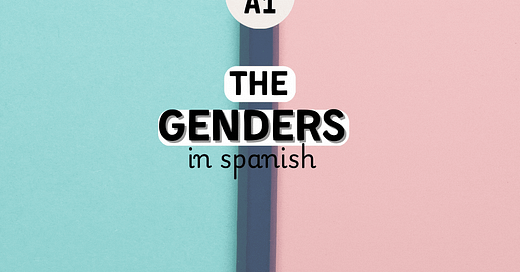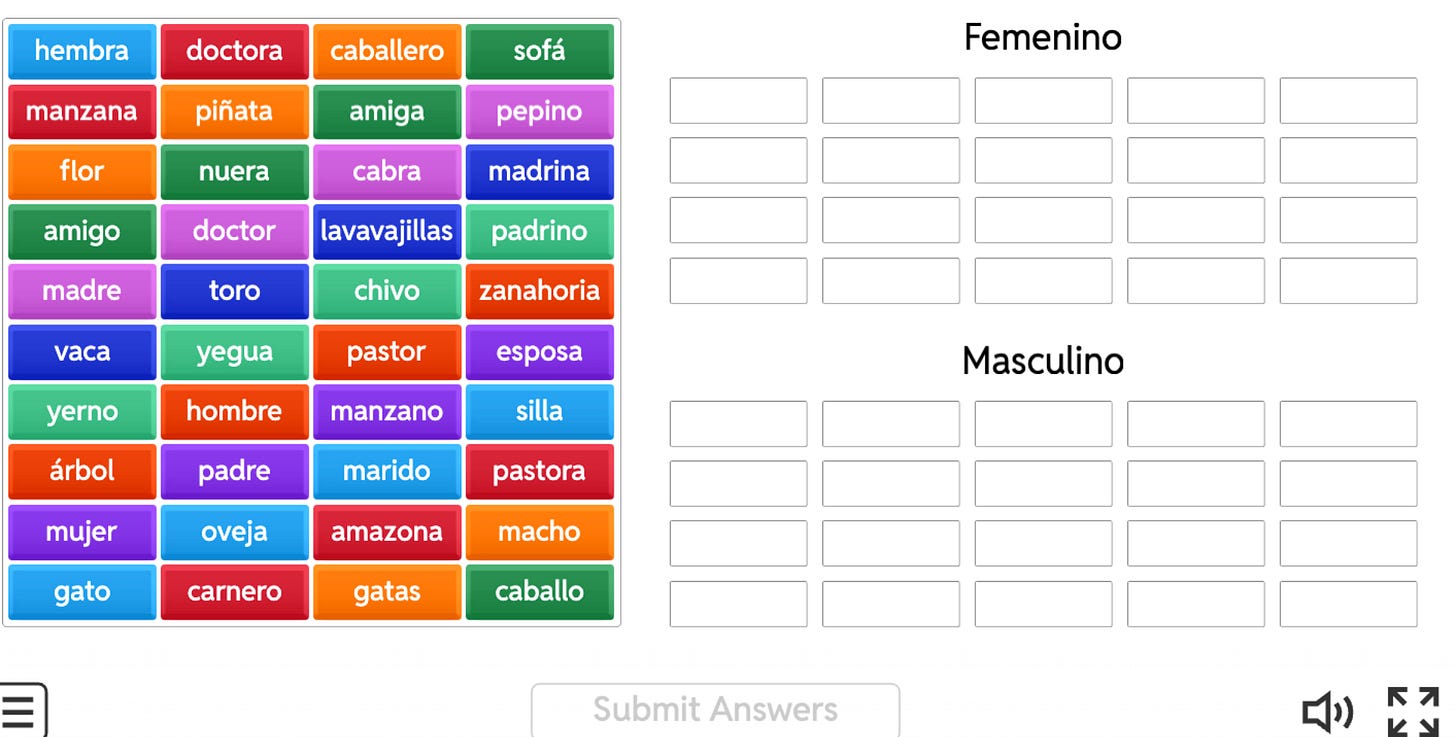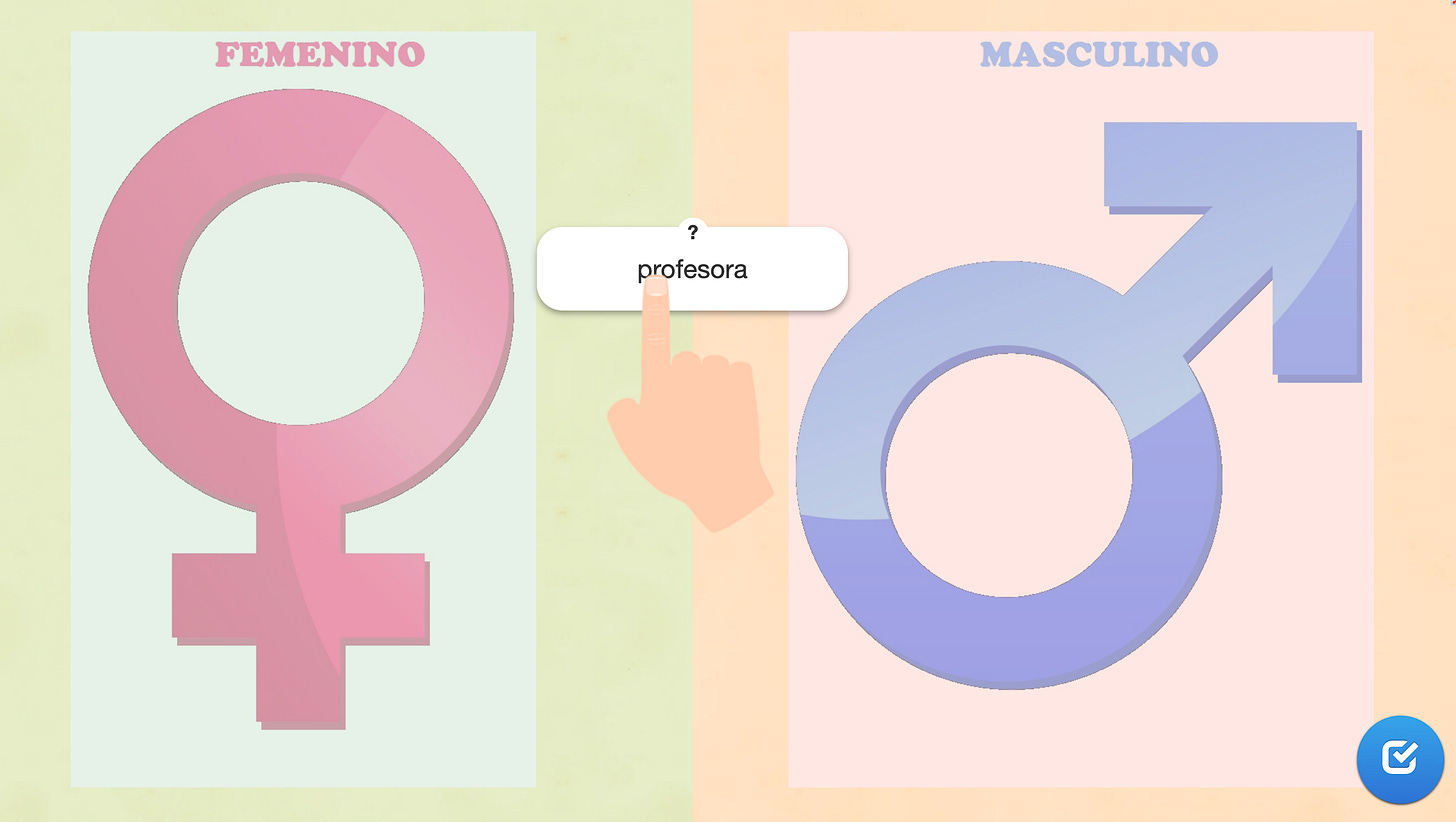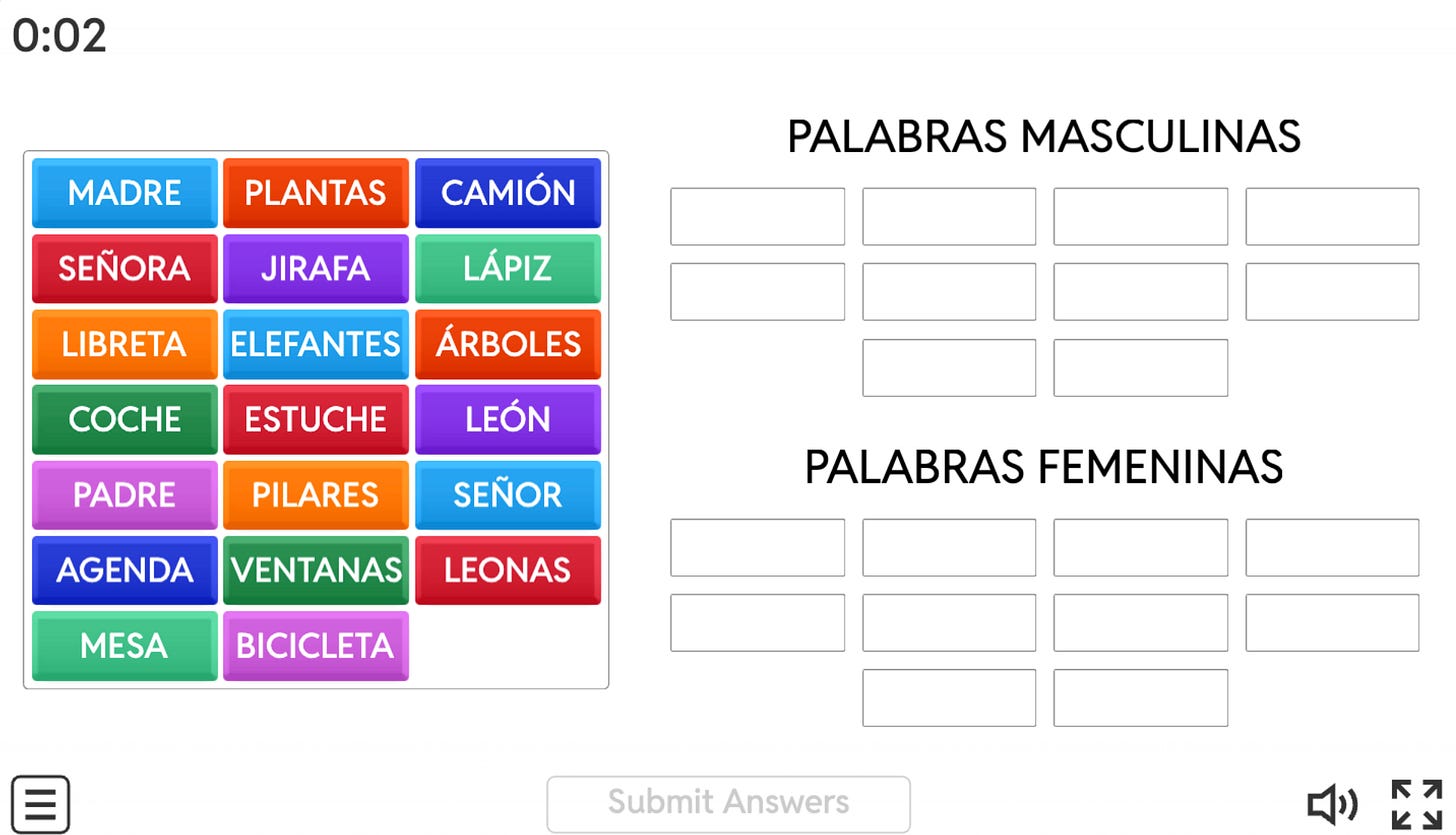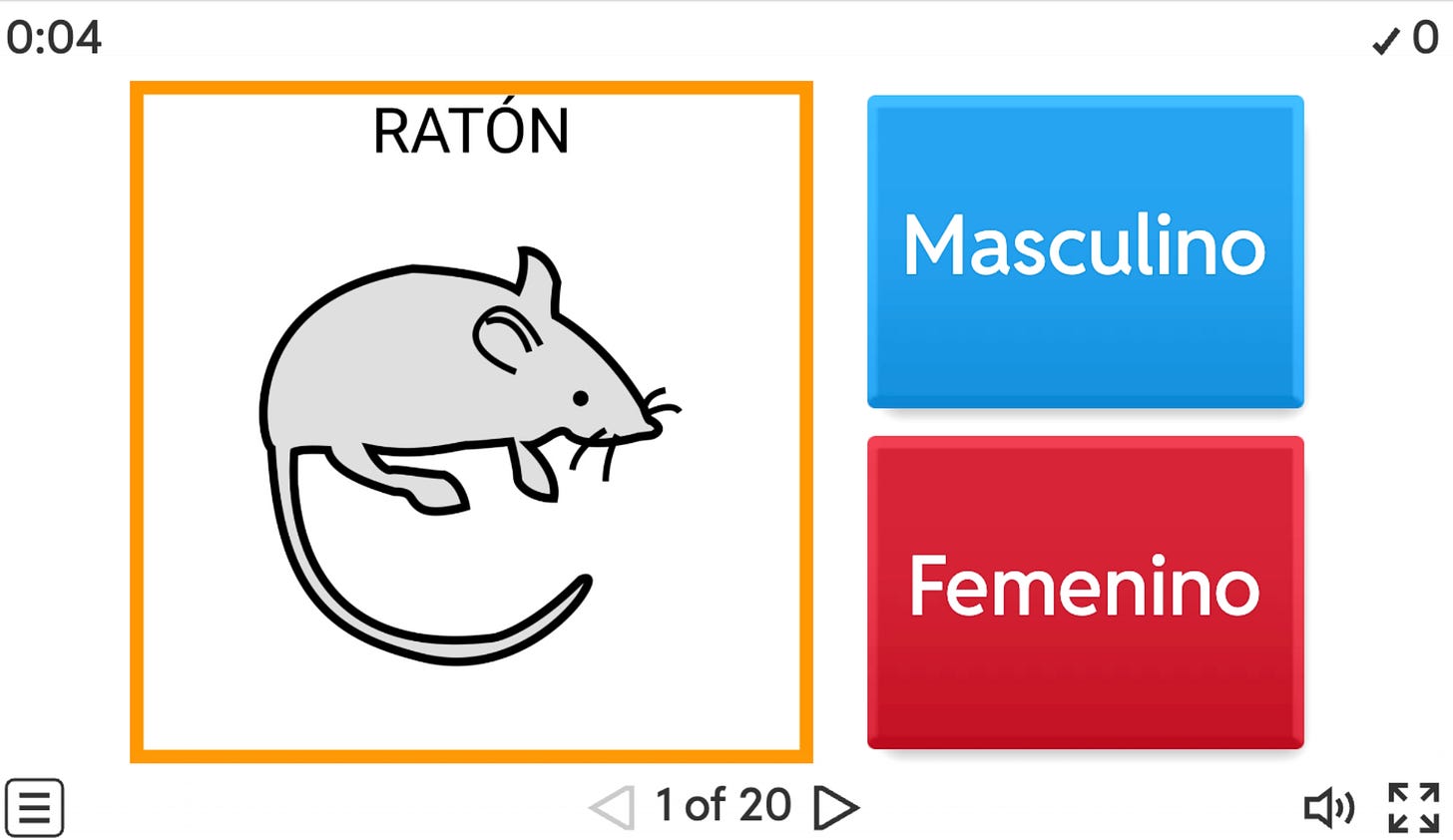Gender in Spanish: Masculine and Feminine
One of the most interesting challenges when learning Spanish is understanding gender. Spanish, like many Romance languages, assigns a gender to every noun. While this concept may seem confusing at first, don’t worry!
By the end of this post, you’ll not only understand the basic rules of gender in Spanish but also feel more confident navigating the tricky exceptions that come with it!
What is Gender in Spanish?
In Spanish, nouns are categorized as either masculine or feminine. This classification affects not only the article used with the noun (like "the" or "a") but also the adjectives and pronouns that describe it. To help you understand, let’s break down the rules:
Masculine nouns typically end in -o, -e, -ista, and some other letters.
Feminine nouns usually end in -a, -ción, -dad, and similar endings.
The real challenge comes when you encounter the many exceptions. In this post, we’ll teach you how to spot these exceptions and learn them effectively. But first, let’s start with the basics.
Basic Gender Rules in Spanish
Masculine Nouns
Most nouns ending in -o are masculine:
El perro (dog)
El coche (car)
El sombrero (hat)
Feminine Nouns
Most nouns ending in -a are feminine:
La casa (house)
La mesa (table)
La flor (flower)
These are the most straightforward rules, but Spanish doesn’t always follow them. There are numerous exceptions, so it’s essential to stay on the lookout for words that break these patterns. Let’s take a closer look at those tricky exceptions.
Understanding the Exceptions in Spanish Gender
There are many nouns in Spanish that don’t follow the general rules for masculine or feminine endings. Here are some common categories of exceptions, with helpful tips for learning them:
Masculine Words That End in -a
Even though -a is typically a feminine ending, there are some masculine nouns that break the rule. For instance:
El día (day) – masculine
El mapa (map) – masculine
El problema (problem) – masculine
📌 Tip: Remember these words as exceptions! A helpful trick is to associate them with their definite article (e.g., el), which will help you remember that they are masculine.
Feminine Words That End in -o
Some feminine nouns end in -o, which might confuse you. Examples include:
La mano (hand) – feminine
La radio (radio) – feminine
📌 Tip: Again, memorization is key. These are unusual exceptions, so the more you practice, the more natural it will feel.
Nouns Ending in -e or -ista
Nouns that end in -e or -ista can be either masculine or feminine. For example:
El estudiante (the student) – masculine or feminine
La gente (people) – feminine
El artista (the artist) – masculine or feminine
📌 Tip: To remember the gender of these nouns, try to associate them with the gender of the person you're referring to. For example, if you say el estudiante (the male student), then you’ll likely say la estudiante (the female student) for the same noun.
Nouns Ending in -ción and -dad
Most of these nouns are feminine, even though they don’t end in -a:
La acción (action)
La libertad (freedom)
La nación (nation)
📌 Tip: This is a helpful pattern to recognize! Once you know that nouns ending in -ción or -dad are feminine, it becomes easier to spot them.
Other Exceptions
There are many other exceptions you will encounter. For example:
El lápiz (pencil) – masculine
La clave (key) – feminine
El mar (sea) – masculine
📌 Tip: As you learn more vocabulary, make a mental note of the gender of new words, especially if they don’t follow the expected pattern.
Interactive Exercise: Gender Matching
Click here to practice.
Categorize the words according to their gender
Click here to practice.
Categorize the words according to their gender
Click here to practice.
Categorize the words according to their gender
Click here to practice
🚀 Want to Learn More?
📅 Book a 1-on-1 Spanish Lesson with me! 👉 Click here to schedule!
🎥 Subscribe to My YouTube Channel for more fun lessons! 👉 Subscribe Now!


